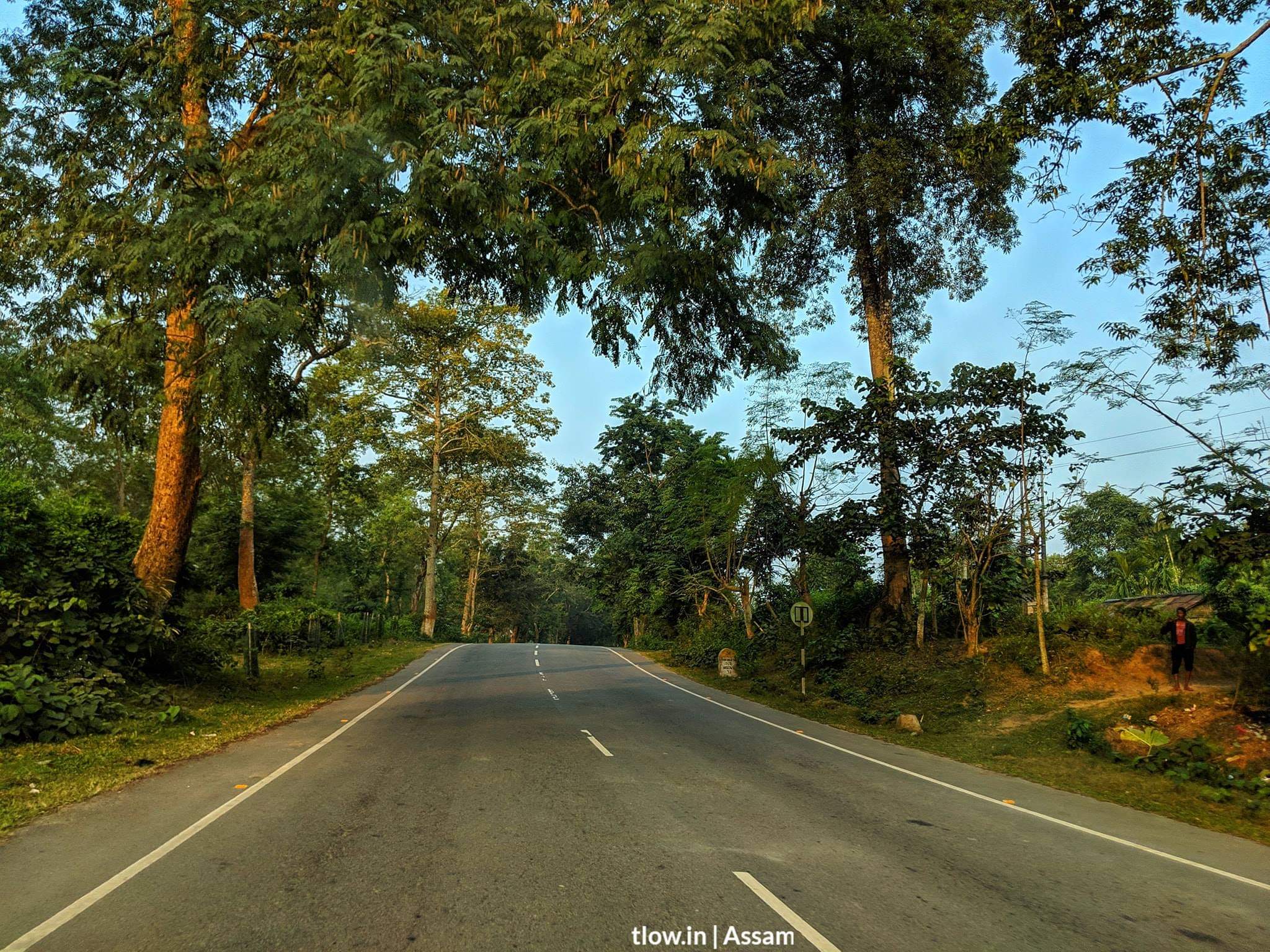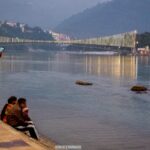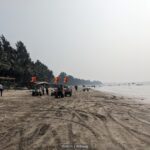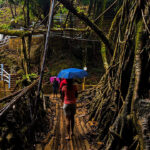
Why Assam is a must visit place
Assam, state of India is located in the northeastern part of the country. It is bound to the north by the Kingdom of Bhutan and the state of Arunachal Pradesh, to the east by the states of Nagaland and Manipur, to the south by the states of Mizoram and Tripura, and to the west by Bangladesh and the states of Meghalaya and West Bengal.
The name Assam is derived from the word asama, meaning “peerless” in the now extinct Ahom language. The neighbouring states of Arunachal Pradesh, Nagaland, Mizoram, and Meghalaya were once part of Assam. The capital, formerly Shillong (now the capital of Meghalaya), was shifted to Dispur, a suburb of Guwahati, in 1972.
With an area of 78,438 square kilometres, Assam is almost equivalent to the size of Ireland or Austria. Assam shares international borders with Bhutan and Bangladesh and the international borders of China and Myanmar are within 80 to 100 kms.
If you are looking for someplace where you can experience nature at its best, Assam is the place for you. It is gifted with great flora and fauna in. Here are five reasons the state is a must-visit
1. National Park
- There are a total of three National Park in the state of Assam which has various species of wildlife as well as plant life in it. One must-see and experience the jungles in Assam. Kaziranga National Park, a UNESCO World Heritage Site is 400 sq.km. It is the largest habitat for the one-horned rhinoceros and other unique flora and fauna. It is a grassland in central Assam on the bank of the Brahmaputra river; 200 kms east of Guwahati.
Manas National Park is at the foothills of the Himalayas, where the river Manah flows with picturesque turns and clean water as well as sandy beaches. Primarily a tiger reserve, it has other valuable flora and fauna; it is 150 kms west of Guwahati.
Nameri National Park, one of the most scenic national parks of Assam, is a delight for the nature-loving and bird watching traveller. The bird-life is particularly superb. Also, the chances of spotting a tiger here are very high.
2. Largest river island in the world
- Majuli or Majoli is the largest river island in the Brahmaputra river in Assam. Mājuli had a total area of 1,250 square kilometres (483 sq mi), but having lost significantly to soil erosion, it has an area of only 421.65 square kilometres (163 sq mi) as of 2001. The nearest is Jorhat town. Krishna, the popular Hindu god is supposed to have played here with his friends.
It is the cultural capital of Assamese civilisation since the 16th century. Many Xatras (Satra) or monasteries constructed by the saint still survive and represent the colourful Assamese culture. Vaishnava Satra was founded by Sankardeva, the father of Assamese culture.
The main surviving Xatras (Satra) are Dakhinpat Xatra, Garamurh Xatra, Auniati Xatra, Kamalabari Xatra, Benegenaati Xatra and Shamaguri Xatra. One can view endless islands on reaching Kamalabari Ghat via the ferry.
3. Historic importance
- Assam was known as the Kingdom of Pragjyotisha-Kamarupa during the first millennium AD and was broken into smaller states during the beginning of the second millennium. However, later, after the 13th century for the next six hundred years, the region again transformed into a united sovereign country as the Kingdom of Assam under the later dynasties such as the Ahoms and Koches.
Despite being an archaeologically and historically rich region, Assam is still a terra-incognito to the world. Assam is also rich in history and archaeology. In the ancient times, the Kingdom of Pragjyotisha-Kamarupa under at least three successive dynasties for more than 700 years and in the medieval periods the Kingdom of Assam under the Ahoms for 600 years were strong and sovereign kingdoms; no western powers including the great Mughals could invade and occupy the region till the British came.
Apart from several failed attempts by the north Indian kingdoms in the ancient times, the Mughals attempted invading Assam 17 times, where only once they could get a little success in occupying and controlling a major portion only for a period of two years. Mughals were defeated and completely thrown out from the Brahmaputra Valley in the 17th century. However, the Mughals had maintained control on the western territories (now North Bengal) of the Koch Kingdom and in some parts of the Jayantiya Kingdom (a tributary ruler under the Ahoms) - now in Bangladesh.
Due to the richness and self-sustained nature of the kingdoms in Assam, the rulers hardly attempted any outward aggression leaving only a few instances. During the rule of the Barman Dynasty of Kamarupa, King Bhaskarvarman occupied then Gauda (later Bengal) along with its capital city, Karnasuvarna in the 7th century; then a major portion of present eastern Bangladesh. In the 17th century, a plan for reoccupying the lost land of the ancient Kamarupa kingdom and destroying the Nawab of Gauda by the Ahom king Rudra Simha was thwarted after the king's sudden death during his organisation of a large army of four hundred thousand in Guwahati.
With such a historic background, Assam possesses hundreds of historic and archaeological sites, where extensive research opportunities and tourism potentials are still left.
4. Shop
- Assam has maintained a rich tradition of various traditional crafts dating back to more than two thousand years. Presently, cane and bamboo craft, tea, bell metal and brass craft, silk and cotton weaving, toy and mask making, pottery and terracotta work, woodcraft, jewellery making, musical instruments making remain major traditions and interesting souvenir items.
Assam possesses unique crafts like a toy and mask-making, mostly concentrated in the Vaishnav monasteries, pottery and terracotta work in western Assam districts and woodcraft, iron craft, jewellery, in many places across the region. There are three major types of indigenous wild silks produced in Assam— golden Muga, white Pat and warm Eri silk.
Muga Silk is the product of the silkworm (Antheraea assamensis) which is indigenous to Assam. This silk can be hand-washed with its lustre increasing after every wash. Pat silk is produced by silkworms which feed on mulberry leaves. It is usually brilliant white or off-white in colour. Eri Silk is made by silkworms which feed on leaves of Castor oil plant. It is also known as Endi or Errandi silk. This silk is soft and warm and is popular in making shawls and quilts.
5. Assami cuisine
- The Khar is a signature preparation made with a key ingredient, also called khar. The traditional ingredient is made by filtering water through the ashes of a banana tree, which is then called kola khar. A traditional meal invariably begins with a khar dish, made of raw papaya, pulses or any other main ingredient. Xôkôta is a severely bitter type of preparation prepared with dry jute leaf, urad bean and khar. Tenga is a light and sour fish dish, another signature preparation. The souring ingredient could be mangosteen, lemon, etc, but the most popular one is that made with tomatoes. Fish dishes made with fermented bamboo shoots are generally sour, but they are not called tengas. Fish is fried in mustard oil or curried with bottle gourd or spinach. Another tenga dish is prepared with matimah (urad bean) and outenga (elephant apple). Bottle gourd also can be added to it. Tengamora or noltenga and lentil is also a distinct tenga curry. Poitabhat is a favourite dish in Assam during the summer season. Cooked rice is soaked overnight in order to prepare poitabhat and served the next day garnished with mustard oil, onion, chilli, pickles, pitika (mashed potatoes), etc. Side dishes called pitika - is a signature characteristic of this cuisine. The most popular is aloo pitika (mashed potatoes) garnished with raw onions, mustard oil, green chillies and sometimes boiled eggs. Khorisa tenga is mashed fermented bamboo shoot, sometimes pickled in mustard oil and spices. Kharoli is fermented mashed mustard (Brassica campestris var toria) seed to which a khar has been added, and kahudi to which an acidic agent (lemon juice, dried mangosteen) has been added. Pitikas are also made from roasted or steamed vegetables (tomatoes and eggplants being very popular).
If these reasons make you crave to experience a new place, sign up for an Assam trip and we'll make sure that you try everything from this list.
-->For a similar experience, >>Click here
-->To plan a trip to North-East India, >>Click here











